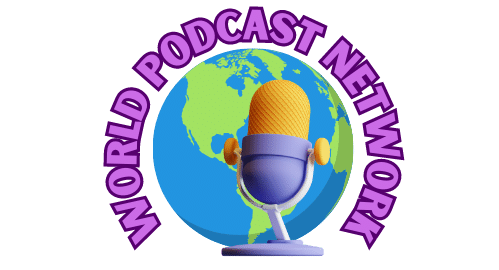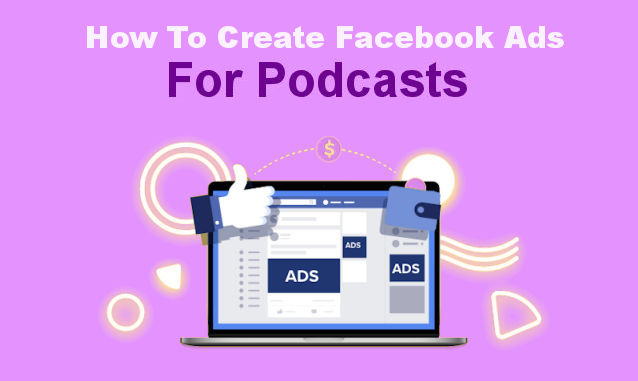Can Podcasters Use Facebook Ads to Effectively Grow Their Audience?
It may be nearly hard to get your material seen in the midst of frequent changes to media platforms’ algorithms and search engine rankings. Though you want to go viral, you’re going to have to spend money, even if the organic search is free and convenient.
However, even if earned and owned media have their marketing worth; paid social advertising is the best approach to bring in visitors and sales right out of the gate.” In 2020, social media ad expenditure in the United States was estimated at $40.3 billion, with 75% of Gen Zers and 48% of millennials affected by social media commercials.
Businesses of all sizes need to take advantage of social media advertising to stand out from the crowd, increase content views, and boost sales.
There is a mammoth amount of money in podcasting. It’s predicted that the worldwide market will reach $94.88 billion by the end of the decade. As proven by the growing number of podcasts and podcast listeners throughout the world, it’s a terrific time to get into the industry.
If you want to begin a podcast because you have an idea worth sharing or want to market your business, several resources are available to assist you. If you want to attract listeners, you’ll need to market your podcast once you’ve begun.
How can you promote your podcast on Facebook?
In this blog post, we’ll go through everything you need to know about promoting your podcast, from social media to search engine optimization. The most prominent podcast directories and how to get your podcast featured on Google are also covered in this blog post.
Numerous boxes must be ticked when creating a paid Facebook advertisement. Ensure you target for the right audience. Have you checked to see whether your image proportions are accurate? Exactly what kind of advertisement are you putting out there?
For marketers, Facebook provides a unique chance to supplement their organic efforts with more than 2.6 billion monthly users and roughly 1.7 billion daily users. Having both time and money at stake means that there is little space for monitoring.
How to target the market, demographics, finding the right audience members on Facebook
For each & every ad set that is part of a campaign, you may customize your audience’s demographics. There is a decent possibility that you will have to try a few different targeting choices before you find the perfect demographic for your sponsored advertising on Facebook.
For example, do you want to target men between the age of 45 and 50 living in Canada and the United States who are into baseball? How about all young adults between the ages of 19 and 27 who like to travel and LGBTQ? You can do that with demographics as well as geographics and psychographics (lifestyle).
Facebook’s targeting parameters are supplemented with an audience definition gauge to assist you in restricting your emphasis. All of the attributes you’ve selected will be considered by this tool, which can be found just to the right of the audience targeting sections.
A typical gauge looks like the following:
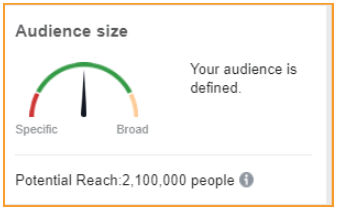
The gauge is based on your target audience, where they live, and your Facebook daily budget for your podcast.
Think about your goal while deciding whether or not to target a certain group. If you’re trying to get visitors to your site, you’ll generally want to target those who are likely to be interested. It’s OK if you’re trying to raise brand recognition or advertise a particularly compelling deal to a wider audience.
Facebook demographics entail all of the following factors to help you target the right audience for your podcast. There are several targeting possibilities integrated into Facebook, including the following:
-
Languages
-
Relationship
-
Education
-
Work
-
Location
-
Age
-
Gender
-
Politics (U.S. only)
-
Connections
-
Financial
-
Home
-
Ethnic Affinity
-
Generation
-
Parents
-
Life Events
-
Interests
-
Behaviors
Selecting a Custom Audience lets you target Facebook users who are in your company’s contact database, have visited a page on your podcast that contains tracking pixels, or have downloaded your podcast app. Check out these guidelines on how to create a Facebook Custom Audience. (And this Facebook targeting site has further information on the details of these factors.)
After a period of running Facebook ads, you may not need to go through the process of creating new audiences if you identify a podcast audience that reacts favorably to your advertisements.
An example of your choices are here:
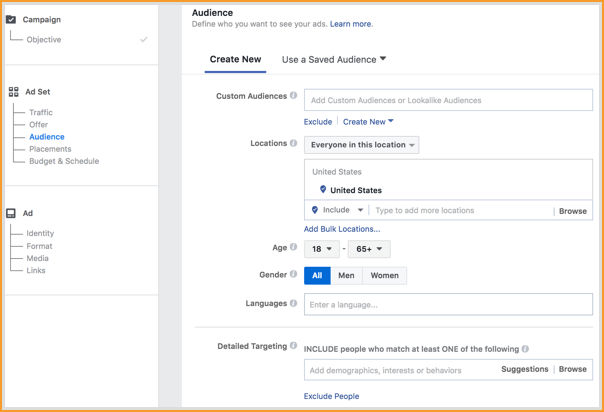
How to target different countries 1st, 2nd, 3rd tier countries
Targeting your Facebook advertisements to several countries might help you save time and money when purchasing international advertising. With the help of our algorithm, you’ll learn which advertising strategies work best in which countries based on their CPA (cost per action).
You’ll find
Audience on Ad
set in Ads Manager, the level that shows after you’ve selected your goal (location targeting is available for most objectives).
Options for targeting you can do the following things using Locations:
-
Everywhere (type Worldwide)
-
By a nation-state or geographical area (e.g. type in Asia)
-
By way of FTA (e.g. type in GCC, the Gulf Cooperation Council)
-
Via the use of county-level divisions (e.g. type in Michigan)
-
Additional characteristics (e.g. type in iTunes app store countries or Emerging markets).
Selecting Browse in Ads Manager brings up a drop-down menu with a list of regions and countries.
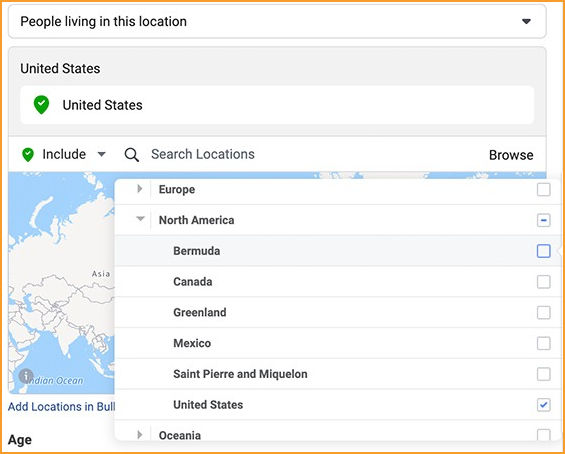
Keywords set with the ad to make make your potential podcast audience click
A podcast’s promotion begins with its recording and editing. Your podcast episodes may be ranked higher in search results by following a few easy steps. In addition, these ideas make it easy to sell and improve your podcast after it’s published. The first step is to select a format that is appropriate for your audience.
In Facebook, people DO search for podcasts. The most often searched are:
-
Interviews
-
Co-hosting a conversation with another person
-
Monologues
-
Discussions on a panel
-
Storytelling in the form of nonfiction
-
Reporting for the media
-
Fiction
-
Current events
It’s possible to come up with your own format, but it’ll be simpler to acquire an audience if you stick to the styles mentioned.
It’s difficult to determine what format to use in the beginning for your podcast. Before you begin, identify who your audience is. Interviews with specialists in their area are likely to be of interest to podcast listeners, such as interior designers. Take into consideration your podcast’s aims and imagine your average listener to assist you in choosing a format.
Take care of the latest podcast trends
Pay attention to current podcast trends as you create your own podcast. The 2019 Google algorithm upgrade, which began indexing podcasts in order to include them on search engine results pages, is a significant breakthrough in podcasting recently (SERPs). As a result of this development, potential listeners are increasingly using voice search to locate podcasts that answer their specific questions. To attract more listeners, podcast broadcasters must now focus on their podcast SEO efforts.
Other podcasting trends to keep an eye on include:
-
A podcast listener’s top priority is always high-quality information.
-
As a result, podcasters get a great amount of respect and trust from their audience.
-
Traditional TV and radio ads are being replaced by podcasts as a source of advertising revenue.
-
Podcasts are becoming increasingly popular among the 50+ age group.
-
Data will be necessary if we hope to attract new listeners to our program.
For podcasters, what does this mean? If you provide high-quality material, your podcast will have a dedicated following and a large advertising audience.
What is the best title for a podcast’s Facebook ad campaign?
The name of your podcast should be succinct and to the point. A lengthy, convoluted sentence will only irritate the reader. Episode titles in Facebook must be short and sweet in your Facebook ads. If you have a popular brand, you may utilize a clever play on words or even incorporate it into your name. Use your podcast’s primary keyword if you’ve made an effort to do so (see the following recommendation). However, since it’s easier to incorporate keywords in individual episode titles than in the show title, don’t sacrifice originality for SEO in the program title.
It’s more vital to employ your target keywords in episodes because they are what results appear in Google’s search. A podcast on gaming tips would be amazing for SEO, but labeling it “Tips for Gamers” would be too vague. It’s better to use keywords that your audience is searching for in the episode titles. If you’re going to make an episode on the greatest gaming PC specs, you should call it “Best Gaming PC Specs” or something similar because your intended audience is probably looking for such information. Use Google Trends to find the best trends going on.
Fill your title with descriptive keywords
You’ve probably heard of keyword research for blog articles and websites. As a result of Google’s recent upgrade that focuses on verbalized keywords, keyword research is important for podcasts as well. It’s helpful to search for keywords relating to the content of your podcast after you know what you want to talk about. Focus on the search terms your intended audience is using.
Make an effort to include your list of keywords in your podcast episodes. In order to rank for a verbalized term, Google’s natural language processing (NLP) tools will pick it out if you talk clearly.
Additionally, include relevant keywords in the summary of your post
You’ll also want to include keywords in the description of your podcast, as this information is also crawled by Google. Google and human readers/listeners don’t appreciate keyword stuffing (repeatedly including your term). In terms of podcast descriptions, there are no hard-and-fast regulations, and RSS-based material doesn’t have a limit. Apple Podcasts, on the other hand, have a character restriction of 4,000. Therefore that’s generally accepted as the upper limit.
Dan Misener, a content marketer, delved into podcast description lengths to see if there were any trends. It was determined that the average length of podcasts was 243 characters, with a considerable increase of 600 characters.
Your podcast description and show notes are not the same things. The purpose of a description is to entice listeners who are already interested in the topic of your episode to continue listening. There is a lot of information in the show notes, including a lengthy summary of the episode. More commonly, podcast platforms offer a description between 70 and 150 characters on Google.
Facebook Checklist for Advertisement
There are several ways to pay for advertising on Facebook,
-
All of your resources are stored in the campaign.
-
If you are trying to reach two or more distinct groups, you’ll need to create separate ad sets for all.
-
Your ad sets contain your real adverts. Depending on the type of ad, every ad set can carry a range of different adverts.
How to start Facebook Ads
-
Sign up for a Facebook Manager account.
-
Use Facebook’s Manager to begin generating an ads
-
Decide what you want to achieve.
-
Make a decision on which you’re going to address.
-
Decide on a spending limit.
-
Make an advertisement for your product or service.
-
Keep an eye on your ad’s analytics.
-
Reporting on the effectiveness of Facebook ads.
How can Podcasters sign up for Facebook Ad Manager?
Using Facebook’s Advertisement Manager, users can see all of their ads in one place, and it’s quite user-friendly.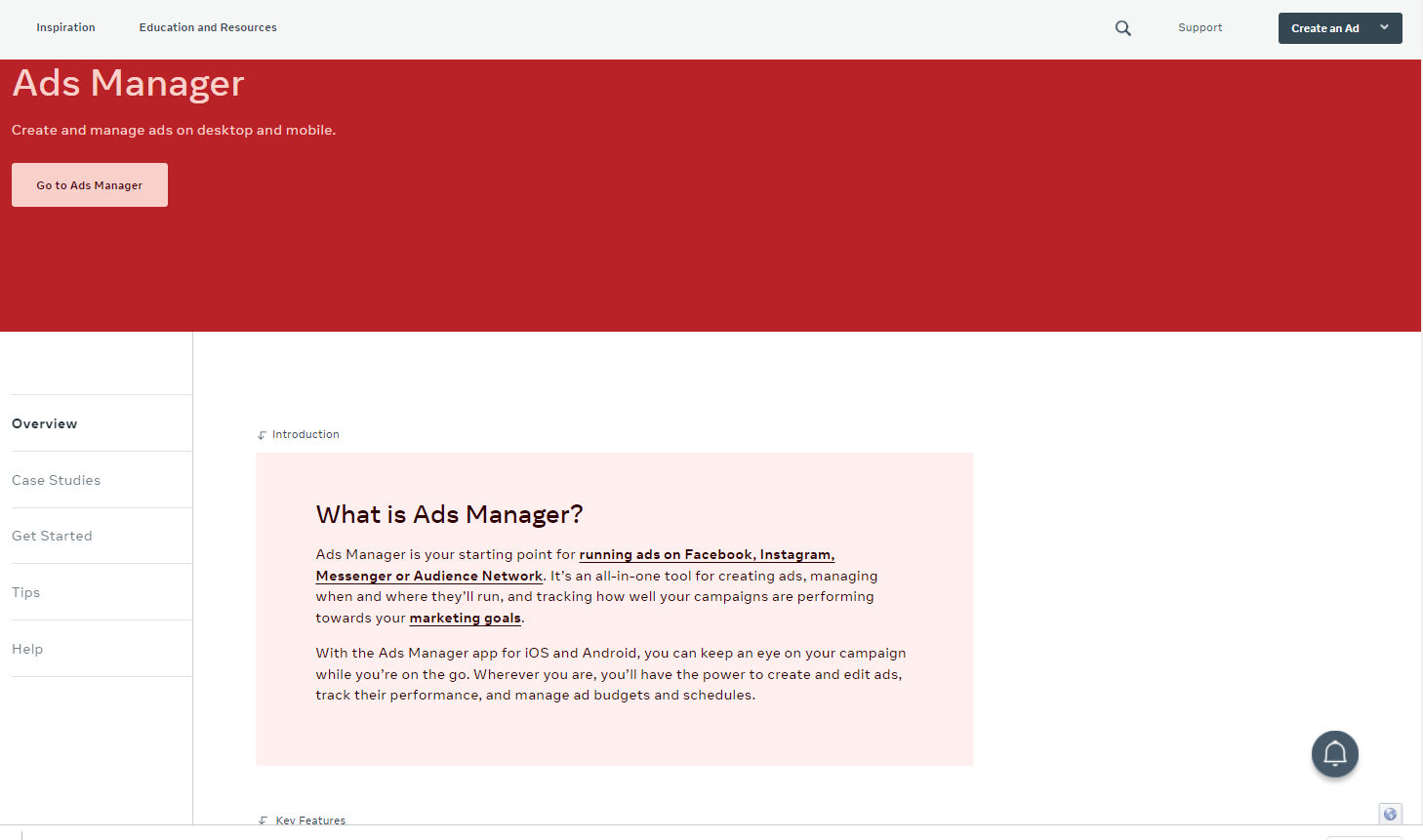
The dashboard displays an guesstimate of your daily spending right away. Columns on the dashboard make it simple to go through your advertisements and get a customized look at your campaign’s performance. It’s a no-brainer to report on performance because key metrics are easily available. To make advantage of the Facebook Manager, need Facebook Business Page.
You’ll then need to follow these instructions:
-
To access the Advertisement Manager, click the “Go to Manager” button.
-
On the account setup page, double-check your details.
-
Generate a method of payment.
-
Save the changes.
-
Once the Advertisement Manager is set up, it serves as the hub for all of your Facebook advertising efforts.
How to use Facebook’s Advertisement Manager to begin generating an ad for your podcast.
As soon as you log into the Advertisement Manager you’ll be presented with a performance control panel that includes all of your outcomes for your Facebook page. This dashboard will be empty unless you’ve already placed an advertisement for your Facebook page.
After you’ve decided on an ad category you want to create in the Facebook advertisement and clicked the Create button to the left of the ad kinds, you’ll be sent to the ad creation page. In this snapshot, you will be able to see that a new operation is presently being created.
Decide what you want to achieve to grow your podcast audience
Like other social media advertising page, Facebook’s Ads Manager is designed to help you achieve your campaign objectives. Advertisement Manager will ask you what your campaign’s goal is before you even begin your campaign. The following are types of Facebook objectives:
-
Clicks
-
Engagement
-
Video Views
-
Messages
-
App Installs
-
Lead Generation
-
Traffic
It is possible to select from a total of eleven goals. The list covers everything to redirect traffic to the online page.
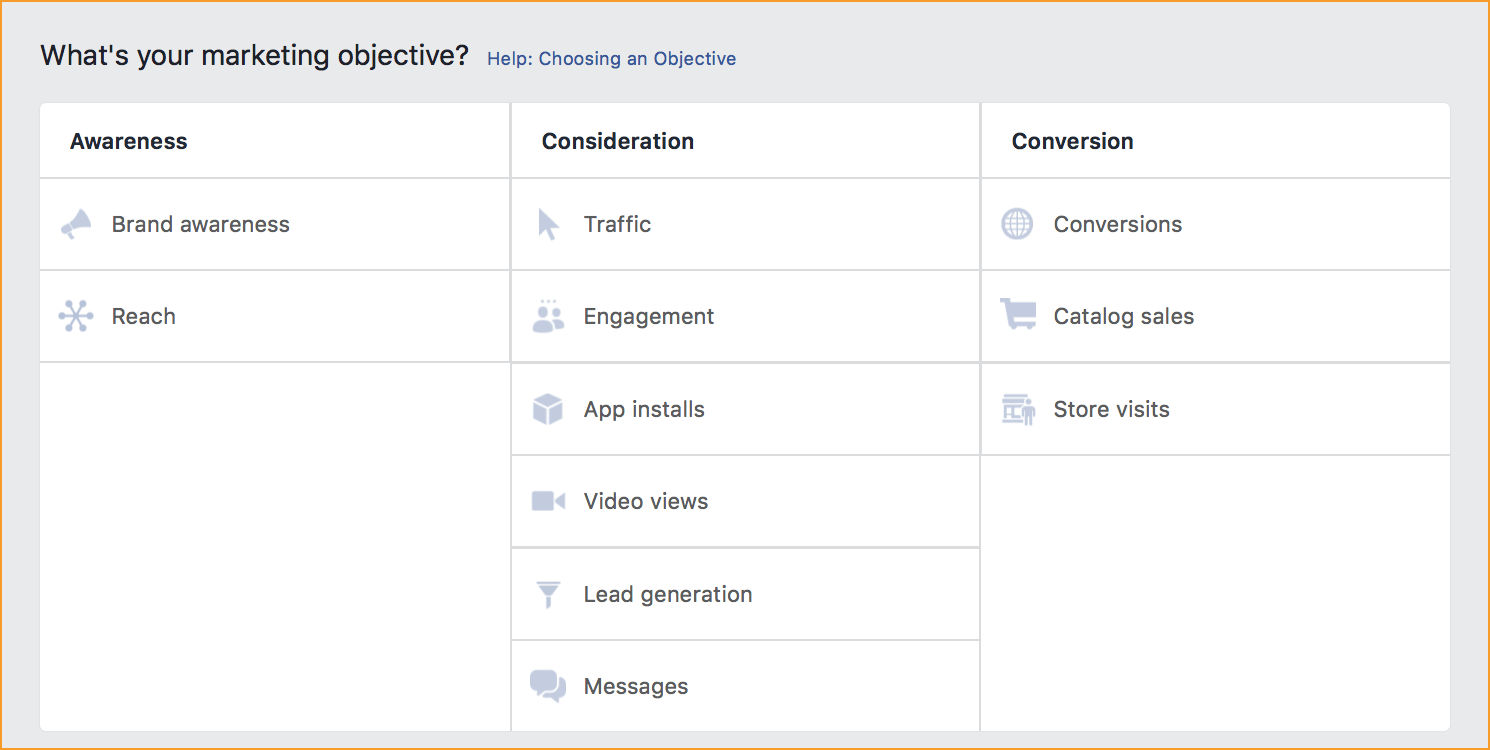
If you select one of these options, Facebook will have a better picture of what you’re looking to accomplish so they could give you the best ad possibilities.
Suppose, for this podcast that you want to increase the number of visitors to your page. Selecting this option will inform you to input the URL you’d want to advertise on Facebook. Keep track of this ad’s traffic and conversions by setting up a unique tracking URL in your marketing automation program.
A list of ad options relevant to reaching this goal will be shown to you once you’ve picked it on Facebook. The Facebook Ads Checklist is a must-have resource for best practices in Facebook ad campaigns.
Make a budget
You may create a daily budget or lifetime budget on Facebook. The following is how they diverge:
Set the daily budget
Choosing this setting will ensure that your ad campaign will constantly run for the entire day. With a daily budget, Facebook keeps track of how much you’re spending each day. The daily plan for an advertisement set must be at least $1.05 USD and 2-2.5X your CPC.
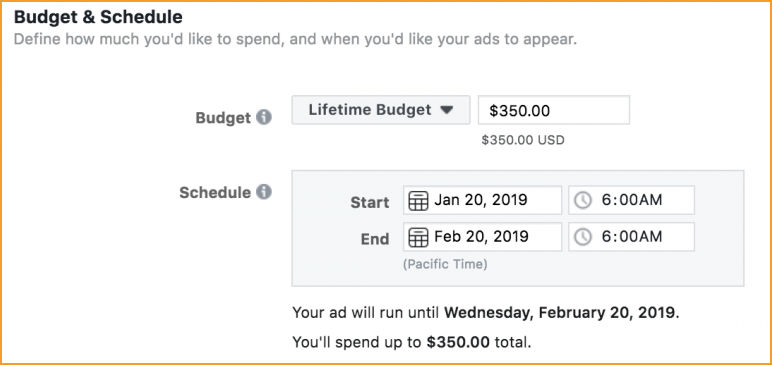
Set the budget for lifetime
If you want your ad to run for a particular period of time. As a result, Facebook will manage your ad’s budget in accordance with the time frame you’ve designated for it to run.
Schedule
You may choose the begin & end dates of your campaign, or you can have it run instantly and continually. You may also limit the times and days of the week/month when your adverts appear by configuring the settings. This is a great way to test different strategies at different times of the year, if for example, your podcast is about the summer, Christmas, or Mother’s Day.
Pricing and Optimization
You may decide whether want to bid for your goal, whether it’s a click or an impression. It will affect how your advertisement is shown and paid for. Your ad will appear in front of people who are more liable to do the required action if you do this, but usually Facebook will determine the maximum amount you are willing to spend.
The manual bidding option is the best choice if you don’t want Facebook to decide on the best bids for your campaign on your behalf. This option gives you complete control over the sum of money you’re keen to spend for each performed task. As a result, Facebook will present an estimate of how much you should bid in addition to giving you an idea of what other marketers are doing.
Delivery
There are two types of delivery: normal and expedited. Accelerated delivery allows you to reach a target audience swiftly for advertising that must be seen immediately. The disadvantage of expedited is that your daily budget may be used up sooner than the end of the day. If you want your podcast Facebook ad to run all day, then select the normal delivery.
Difference between video ads and still image ads for podcasters
Still image ads
Probably the most common sort of ad, photo advertising, may be seen in news feeds, sidebars, and banner advertisements. In comparison to other ad formats like films and tales, they’re easier to design but require better-quality photographs. When it comes to Instagram carousel advertising, Sprout Social suggests 10801080 pixels.
Ads that feature your podcast episodes in front of the buyer are a terrific way to develop brand recognition. Keep your graphics and tales similar in design to ensure that customers quickly recognise the ad as belonging to your company.
And, of course, photo advertisements are a great way to attract new visitors to your site. Photo-only advertising perform better than other ad types in terms of attracting new visitors, according to Facebook research.
While organic postings don’t have a call-to-action button, photo advertisements can include one such as “Shop Now” or “Download,” which makes it easier for customers to make a purchase.
Video ads
At under a minute in length, over half of all social media users will watch the entire video. This number drops as the length of the video increases. YouTube calls this the retention rate.
As a result, you have a limited window of opportunity to entice and retain users. Fortunately, social media sites such as Instagram and Facebook allow you to create short, looping video advertisements that viewers can rapidly see and interact with while browsing through their feeds.
It’s also possible to produce lengthier videos if you have a compelling message and the resources.
At the right moment, post your podcast episodes on your website
Podcasts are more effective when they are published at the correct times. You should take advantage of the fact that your listeners undoubtedly have certain times of day when they like to listen to podcasts. It’s possible to spot trends in the posting timings of other podcasts in your industry if you don’t have any listening statistics at all.
Make a list of the times when your listeners are most likely to tune in. Try different publication times to see whether one performs better than the other in terms of traffic.
More Blog Posts To Help Your Podcast Succeed
- 10 Reasons To Have Your Podcast on a Professional Podcast Network
- 5 ways to monetize your podcast for 2024 and 2025
- Podcast SEO: How to Get Better Search Engine Rankings For Your Podcast Episodes
- International Podcast Day 2024 on the World Podcast Network
- The Rewilded Human Podcast Address Today’s Social Issues
- Listen to This Dual-Purpose Podcast for Meditation and Support for Ukraine by Shame Piñata
- How the guest exchange works for podcasters and guests.
- The NEW Podcast Leaderboard Rankings Article NOW Including Podcast Guest Exchange Interviews
- New podcast from high school science teacher and the award-winning author!
- The Lucidus Somnia podcast combines Beverly Hills, 90210 meets the X Files!
Podcast Episodes For Podcasters to Become Successful


- S4 E5 - Your Video Podcast With Editor Samori Coles
- How Successful Podcaster Paula Quickly Got 20,000 Downloads | S4 E4
- Bruce Recaps Podcast Movement 2024 With Shari | S4E3
- Featuring The Successful American Dream Podcast With Billionaire Randell Moody | S4 E2
- Why Your Audio Podcasts Needs A Video Podcast S4 E1
- All Podsafe Music Featuring Matt Malone, Ian McFarland, Formwandla, Mike Fox, Bruce Chamoff, Shari Post | S3 S21
- Finding Guests On The World Podcast Network With Shari Post S3 E20
- With Jeremy Fisher From This Is A Voice Podcast | S3 E19
- Fortune Cookie Readings For The 20 Most Active Podcasters On The World Podcast Network!!! S3 E18
- The RIGHT Social Network For Your Podcast | S3 E17
- Does Your Podcast Have TOO Many Guests With Shari Post? S3 E16
- How Podcasters Can Succeed By Following Hulu's Strategy | S3 E15
- Guest Jodi Krangle Of The Audio Branding Podcast And The Podsafe Music Of Jess King | S3 E14 | Become A Successful Podcaster
- Podcast Guest Steve Guttman And The Podsafe Music Of Zaneta Z
- Podcaster Journey With Rapper And Podcaster Pryme Minister
- S3 E11: Dissecting Cast Magic's Output With Guest Greg Wasserman
- S3 E10 Successful Podcasters: Reena Friedman Watts Of The Better Call Daddy Podcast
- S3 E9 Why Podcasters Need Canva For Podcast Marketing
- S3 E8 How Does AI Define Podcasting And What Equipment Does AI Think You Need To Podcast?
- S3 E7 - Why Your Podcast Is Not Growing Fast Enough
- S3E6 - Podsafe Music 4th Of July With Shari
- S3 E5 - Does Your Podcast Need A Script?
- S3 E4 - Is SoundCloud Really A Good Platform For Podcasts? Should You Be On It?
- S3 E3 - How To Make Good Money Playing Podsafe Music On Your Podcast
- S3 E2 - Jay Fairbrother - Mastermind Groups For Podcasters Featuring The Music Of Lian Gold
- Why Are There So Many Podcasters Today? The Competition Out There And How To Survive. | S3 E1
- Meet Podcast Guest JoshPele Magic - Available Now As A Guest For All Podcasts | S2 E29
- What Are YOUR 2023 Goals For Your Podcast? Here Are Mine... | S2 E28
- The Reasons Your Podcast Needs A Holiday Episode | S2E27
- S2E24 - 7 Reasons Why There Are So Many Podcasters And How To Compete
- S2 E18 - What Inspired YOU To Become A Podcaster?
- S2E17 - 7 Cool Ways To Make Your Audience Come Back Every Episode
- S2E16 - 3 Surprising Ways A Blog Will Grow Your Audience FAST!
- S2E15 - Simple 3-Part Marketing Strategy For Any Podcast
- S2E13 Is Your Podcast More Successful With Seasons, Or NO Seasons?
- S2E12 - The Fastest Way To LAUNCH Your Podcast
- S2E11 - The FASTEST Way To Edit Your Podcast
- S2E10 -How To Get High Google Rankings For Your Podcast
- S2E9 - Would Elon Musk Invest In YOUR Podcast?
- S2E8 - The Most Sought Out Podcast Categories Summer 2022
- S2E5 - Fresh Music Series With Hugh Macdonald & Holland Nelson And Melo Mafioso
- S2E4 - Fastest Way To Make Money Summer 2022
- S2 E3 - Monthly Podsafe Music Show For Your Podcast - 5 Songs From Singer/Songwriter Doug Cash
- S2 E2 - Monthly Podsafe Music Show With Doug Cash, Winchester 7, And Bruce Chamoff
- S2E1 - Monthly Music Show With Winchester 7 And The Runners
- EP51 - The Right Way To List Your Podcast Guests
- EP49 - How To Become An Influencer Through Your Podcast
- EP48 - Vik Rajan Of PhoneBlogger.net And Https://videosocials.net/
- E47: Rob Intellisano Of The Amazon Hit Gravesend
- EP46 - How To Build A Podcast Community With Adrian Miller
- EP45 - Easy & Fun Podcast Editing Tips W/Professional Podcast Editor Merrill Loechner
- EP43 - Benefits Of A Podcast Network With Guest Rich Butler
- EP39 - Why Podcasters Need A Mobile App With Guest John Lee
- E34 Q&A With Professor Pete Alexander: My Audience Has Dropped! Now What?
- E30 The POWER Of Your Podcast's RSS Feed (Video)
- Daily Podcast Success Update For 9/2/2021
- E17 How To Beat The Competition On Apple Podcasts
- E13 Dual Podcast With Guest Podcaster Antionette Blake Part 1
- E12 How To Get More Engagement For Your Podcast Episodes With Guest Interviews
- E4 - Buzzsprout Was Down On Sunday, Feb 21, 2021. What That Means For YOUR Podcast. My Reaction...
- E3: Five Things To Do Right Now To Grow Your Podcast Audience Fast.
- E2 - Should Podcasts Have Beautifully Produced Introductions With Voiceover And Background Music (and What Your Audience Thinks Of It)
- E1 - Become A Successful Podcaster - Keep Listeners On Your Podcast Episodes Longer
- Become A Successful Podcaster With Bruce Chamoff - Learn Audience Growth, Monetization, Success! (Trailer)
Listen to our podcast on podcasting success!


- S4 E5 - Your Video Podcast With Editor Samori Coles
- How Successful Podcaster Paula Quickly Got 20,000 Downloads | S4 E4
- Bruce Recaps Podcast Movement 2024 With Shari | S4E3
- Featuring The Successful American Dream Podcast With Billionaire Randell Moody | S4 E2
- Why Your Audio Podcasts Needs A Video Podcast S4 E1
- All Podsafe Music Featuring Matt Malone, Ian McFarland, Formwandla, Mike Fox, Bruce Chamoff, Shari Post | S3 S21
- Finding Guests On The World Podcast Network With Shari Post S3 E20
- With Jeremy Fisher From This Is A Voice Podcast | S3 E19
- Fortune Cookie Readings For The 20 Most Active Podcasters On The World Podcast Network!!! S3 E18
- The RIGHT Social Network For Your Podcast | S3 E17
- Does Your Podcast Have TOO Many Guests With Shari Post? S3 E16
- How Podcasters Can Succeed By Following Hulu's Strategy | S3 E15
- Guest Jodi Krangle Of The Audio Branding Podcast And The Podsafe Music Of Jess King | S3 E14 | Become A Successful Podcaster
- Podcast Guest Steve Guttman And The Podsafe Music Of Zaneta Z
- Podcaster Journey With Rapper And Podcaster Pryme Minister
- S3 E11: Dissecting Cast Magic's Output With Guest Greg Wasserman
- S3 E10 Successful Podcasters: Reena Friedman Watts Of The Better Call Daddy Podcast
- S3 E9 Why Podcasters Need Canva For Podcast Marketing
- S3 E8 How Does AI Define Podcasting And What Equipment Does AI Think You Need To Podcast?
- S3 E7 - Why Your Podcast Is Not Growing Fast Enough
- S3E6 - Podsafe Music 4th Of July With Shari
- S3 E5 - Does Your Podcast Need A Script?
- S3 E4 - Is SoundCloud Really A Good Platform For Podcasts? Should You Be On It?
- S3 E3 - How To Make Good Money Playing Podsafe Music On Your Podcast
- S3 E2 - Jay Fairbrother - Mastermind Groups For Podcasters Featuring The Music Of Lian Gold
- Why Are There So Many Podcasters Today? The Competition Out There And How To Survive. | S3 E1
- Meet Podcast Guest JoshPele Magic - Available Now As A Guest For All Podcasts | S2 E29
- What Are YOUR 2023 Goals For Your Podcast? Here Are Mine... | S2 E28
- The Reasons Your Podcast Needs A Holiday Episode | S2E27
- S2E24 - 7 Reasons Why There Are So Many Podcasters And How To Compete
- S2 E18 - What Inspired YOU To Become A Podcaster?
- S2E17 - 7 Cool Ways To Make Your Audience Come Back Every Episode
- S2E16 - 3 Surprising Ways A Blog Will Grow Your Audience FAST!
- S2E15 - Simple 3-Part Marketing Strategy For Any Podcast
- S2E13 Is Your Podcast More Successful With Seasons, Or NO Seasons?
- S2E12 - The Fastest Way To LAUNCH Your Podcast
- S2E11 - The FASTEST Way To Edit Your Podcast
- S2E10 -How To Get High Google Rankings For Your Podcast
- S2E9 - Would Elon Musk Invest In YOUR Podcast?
- S2E8 - The Most Sought Out Podcast Categories Summer 2022
- S2E5 - Fresh Music Series With Hugh Macdonald & Holland Nelson And Melo Mafioso
- S2E4 - Fastest Way To Make Money Summer 2022
- S2 E3 - Monthly Podsafe Music Show For Your Podcast - 5 Songs From Singer/Songwriter Doug Cash
- S2 E2 - Monthly Podsafe Music Show With Doug Cash, Winchester 7, And Bruce Chamoff
- S2E1 - Monthly Music Show With Winchester 7 And The Runners
- EP51 - The Right Way To List Your Podcast Guests
- EP49 - How To Become An Influencer Through Your Podcast
- EP48 - Vik Rajan Of PhoneBlogger.net And Https://videosocials.net/
- E47: Rob Intellisano Of The Amazon Hit Gravesend
- EP46 - How To Build A Podcast Community With Adrian Miller
- EP45 - Easy & Fun Podcast Editing Tips W/Professional Podcast Editor Merrill Loechner
- EP43 - Benefits Of A Podcast Network With Guest Rich Butler
- EP39 - Why Podcasters Need A Mobile App With Guest John Lee
- E34 Q&A With Professor Pete Alexander: My Audience Has Dropped! Now What?
- E30 The POWER Of Your Podcast's RSS Feed (Video)
- Daily Podcast Success Update For 9/2/2021
- E17 How To Beat The Competition On Apple Podcasts
- E13 Dual Podcast With Guest Podcaster Antionette Blake Part 1
- E12 How To Get More Engagement For Your Podcast Episodes With Guest Interviews
- E4 - Buzzsprout Was Down On Sunday, Feb 21, 2021. What That Means For YOUR Podcast. My Reaction...
- E3: Five Things To Do Right Now To Grow Your Podcast Audience Fast.
- E2 - Should Podcasts Have Beautifully Produced Introductions With Voiceover And Background Music (and What Your Audience Thinks Of It)
- E1 - Become A Successful Podcaster - Keep Listeners On Your Podcast Episodes Longer
- Become A Successful Podcaster With Bruce Chamoff - Learn Audience Growth, Monetization, Success! (Trailer)
